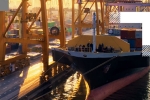Change in the offshoring paradigm
For decades, the offshoring practice has been the operational paradigm of supply chains around the world. The goal of this strategy is to reduce costs by migrating manufacturing and supply operations to countries with a lower manufacturing cost, mainly the ones located in Asia.
The COVID-19 pandemic generated disruptions in the supply chains that broadly depended on Asia and especially on China. This evidenced the vulnerability of offshoring, which was imperceptible before given the regularity that the world experienced.
The localization of manufacturing operations and suppliers, only from a cost perspective, has resulted in a natural consolidation at a regional or country level. However, from a risk management perspective, it is no longer an acceptable practice for a company seeking to lead in its market.
In a future where pandemics, natural disasters, geopolitical conflicts, or other eventualities of similar impact may take place, the concept of competitiveness cannot exist without resilience.
In the organizations’ supply chain, resilience involves more flexibility or a bigger capacity to adapt, especially from the manufacturing and supply point of view. This goes strictly hand in hand with the diversification of operations at a geographical level, in order to mitigate risk and guarantee sustainability in the event of a contingency.
Therefore, from now on, the key for all companies will be to find a balance between competitiveness and resilience. For that reason, nearshoring becomes the right strategy to diversify operations, and Mexico can offer relevant opportunities for the companies that provide for the North American market.
"Companies that choose to establish their operations in Mexico will do so with the objective of achieving greater resilience, but they will also prioritize their costs, because they have to remain competitive."
Nearshoring: opportunities in Mexico
Nearshoring is a strategy that not only looks to capitalize the operating, logistical, and commercial benefits of relocating manufacture and supply to countries that are closer to the source of the demand, but also calls for a geographical diversification to mitigate risks. This strategy has become increasingly important in the past years due to the impact of the pandemic and the commercial tension between China and the United States.


Benefits of nearshoring in Mexico
Mexico is an attractive alternative in relation to other low-cost locations in the world, as it offers diverse benefits among which we can highlight:

Specialized labor at a lower cost.1 As of 2015, the labor cost in China has been higher than in Mexico. In 2019, it was 50% higher.

Developed supply in diverse industries throughout the country. Mexico is one of the low-cost territories with higher growth in the specialized processes manufacturing sectors.

Easiness to begin operations. Mexico has been one of the low-cost countries with highest score in the World Bank's Ease of Doing Business ranking during 2020.

Quick access to the North American market. This entails lower logistical costs, shorter times of delivery, and higher capacity to respond to disruptions in demand.

United States-Mexico-Canada Agreement (USMCA). Represents a competitive advantage regarding fees/duties in North America. In addition, Mexico is part of 13 commercial treaties allowing free commerce with 46 countries, among other commercial agreements.

Guiding your nearshoring strategy
PwC offers different best practices settled solutions and experience to advise clients who are looking to relocate their operations to Mexico. Some of those are listed below:
- Supply chain and operations transformation
- Legal, direct and indirect tax, and foreign trade consulting
Supply chain and operations transformation
- Site location
- Operational perspective: Analysis of costs and availability related with Land, Talent, Services, Logistics
- Socioeconomic perspective: Analysis of variables such as public security, socio-economic landscape, industry context, among others
- Sourcing
- Suppliers’ readiness assessment
- Search and selection of suppliers
- Strategy for development of new suppliers
- Manufacturing Operating Model
- Maturity level assessment of current manufacturing operations
- Manufacturing optimization program
- Target operating model design (Workforce, Processes, Technology)
- Distribution and Logistics
- Distribution network optimization
- Search and selection of logistics partners
Legal, direct and indirect tax, and foreign trade consulting
- Legal perspective
- Analysis of fiscal incentives per sate
- Legal entity set up
- Support in foreign investment rules and real estate
- Contracts development
- Indirect tax and foreign trade perspective
- Customs operations feasibility
- Support in securing general and sectorial Import Registrations
- Support in acquiring IMMEX and PROSEC programs and CIVA and OEA certifications
- Support with free trade agreements
- Direct tax and transfer pricing
- Analysis of tax obligations and operations implications in Mexico
- Analysis of applicable operational structure models (e.g., maquila)
- Assistance in the evaluation and negotiation of Advance Pricing Agreements (APA’s)
- Support with the application of international tax rules and double taxation treaties
Contact us









